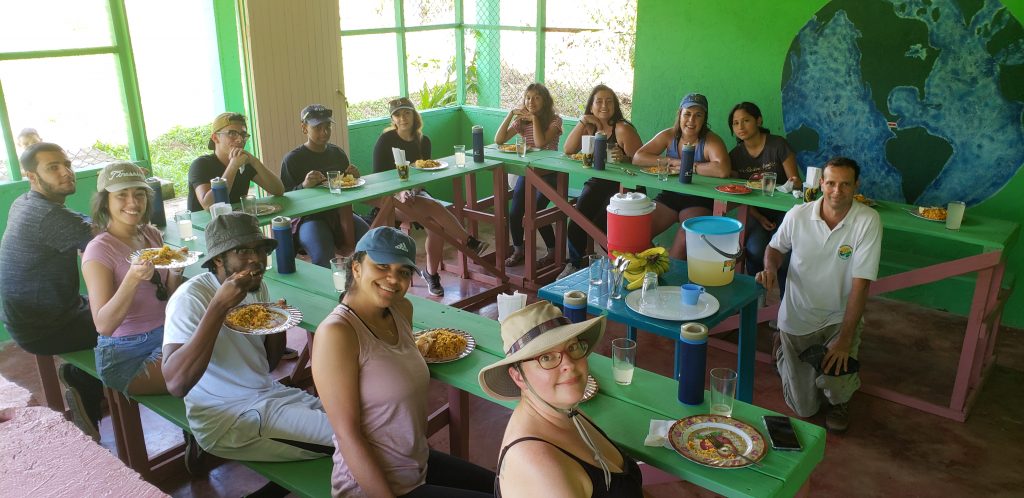In 2018, Cape Town, South Africa, nearly ran out of water. The crisis negatively impacted the city’s tourism sector, and even though it’s rebounding, Cape Town’s water shortage is far from an isolated event. On 22 March, the United Nations honors World Water Day. Here at the Adventure Travel Trade Association (ATTA), we’re encouraging those in the adventure travel industry to think critically about water usage — and how we can prepare for an environment where there’s less of it available.
Irene Lane is the founder of Greenloons, which focuses on sustainable travel. Greenloons staff counsels individuals and organizations on how to create travel products that are social empowering, economically viable, and environmentally responsible, and Lane is well-versed on the latest developments related to tourism and water scarcity. Our recent conversation with her revealed information and advice on what the adventure travel industry should know and do in the face of this new reality.

ATTA: What destinations — or types of destinations — are likely to suffer from water shortages and/or droughts in the near future?
Lane: Destinations such as South Africa, India, Turkey, Spain, Greece, Italy, Dubai, Indonesia (Bali), Thailand, China, Philippines, Jordan, island nations in the Caribbean and South Pacific, and Southern California, to name a few, are all being impacted by water shortages or drought conditions. In fact, the World Wide Fund for Nature recently published a study of 20 world cities being most impacted by a combination of climate change, increased demand, and wasteful water usage.
Also, the Yale School of Forestry recently published a study about the need for attention to watershed ecosystems so destinations can better prepare for hotter and drier conditions.
ATTA: Why is water depletion such a dire problem?
Lane: From a tourism perspective, water stress at a destination is not just a risk to local residents, wildlife, and ecosystems, it is becoming a business risk. For example, there is a correlation between a destination that experiences drought and a decrease in tourism arrival numbers, which was revealed in the study of Kruger National Park, South Africa, two years ago.
According to the International Tourism Partnership, demand for fresh water is likely to outstrip supply by 40 percent by 2030. That’s 11 years from now! Given that one-third of the world’s population will be living in areas of severe water stress by that time, this is not an issue that will go away unless there is a serious effort made to develop a sustainable approach to water stewardship.
ATTA: What should tour companies traveling to these destinations do to inform and educate travelers about the water situation in general?
Lane: Employing water-wise tourism methods would be a start. Unfortunately, the first reaction of many tourists will be to avoid a destination if they feel a water shortage will impact their enjoyment. However, if tour companies can educate visitors that the issue is a worldwide one and how, with some consideration, they will still have a wonderful time at the destination, it will go a long way. Some wonderful examples of traveler communication can be found in South Africa and Patagonia.
It’s also important to note tour companies should also be working with local government and suppliers (such as hotels and restaurants) so they can obtain skills on how to establish water management plans, best harvest rainwater and grey water, and minimize water for laundry, bathrooms, and swimming pools as well as educate their customers. An example, again from Cape Town, is Hotel Verde, which monitors every bit of energy and water use throughout the hotel, and rewards customers for choosing sustainability and wellness.
Another fantastic idea is working with transportation companies that utilize less water for cleaning their buses and cars. As an example, First Car Rental in South Africa has reduced water usage by 80 percent since installing a washing system that recycles used water through a chemical-free biological treatment process that pumps the water back into the system.
ATTA: What can tour operators do at various stages of the traveler's journey to address the water depletion problem?
Lane: During the planning stages, operators can inform clients about the issue and how tourism is impacting local communities, and assuage concerns about water shortages occurring at the destination.
During the booking process, operators can provide water purification bottles (for example, all Greenloons clients receive a free Grayl bottle) and simple tips for saving water, such as turning off the tap when brushing teeth or taking shorter showers.
During the trip itself, tour operators can partner with hotels with established sustainable operations for water and energy conservation. This includes using eco-friendly soaps and cleaning products, which use less water too.
Finally, after the trip, you can hold a contest so clients can submit photos on what water conservation means to them and/or what they did during their trip that changed their minds about the need for water conservation or some other water-wise theme.
ATTA: What is working when it comes to addressing water shortages within the tourism context, and what doesn't work?
Lane: This 2018 report that aims to educate the hospitality industry about the issues and what should be done to address the problem. A good start is working with sustainably certified tourism companies that list specific water conservation methods within their criteria. Of the many sustainable tourism certifications out there, EarthCheck, Rainforest Alliance, Travelife, and Ecotourism Australia are the only ones directly addressing water conservation with scoring criteria.
